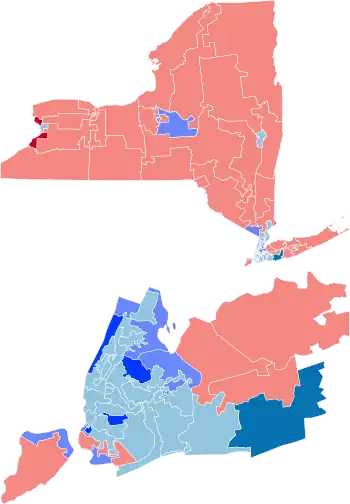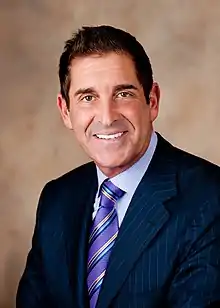| |||||||||||||||||||||||||||||||||
All 63 seats in the New York State Senate 32 seats needed for a majority | |||||||||||||||||||||||||||||||||
|---|---|---|---|---|---|---|---|---|---|---|---|---|---|---|---|---|---|---|---|---|---|---|---|---|---|---|---|---|---|---|---|---|---|
| |||||||||||||||||||||||||||||||||


Results: Democratic gain Democratic hold Republican gain Republican hold Independent Democratic gain Independent Democratic hold Vote Share: 50–60% 60–70% 70–80% 80–90% >90% 50–60% 60–70% 70–80% 80–90% >90% | |||||||||||||||||||||||||||||||||
| |||||||||||||||||||||||||||||||||
The 2016 New York State Senate elections were held on November 8, 2016, to elect representatives from all 63 State Senate districts in the U.S. state of New York.
The Republicans maintained control of the State Senate because of Simcha Felder and members of the Independent Democratic Conference caucusing with the Republican majority. The Democrats gained a seat by filling a vacancy.
Republican candidates won 31 seats while Democrats won 32 seats.[2] The closest races were John Brooks' victory in the 8th district and Carl Marcellino's victory in the 6th district, with both races being decided by less than two percentage points.[3]
This election was the first in which John Flanagan served as Majority Leader. Andrea Stewart-Cousins retained her role as Minority leader.
Notes
- 1 2 3 The Republicans were able to maintain the majority due to a power-sharing deal with the Independent Democratic Conference and Democratic State Senator Simcha Felder joining their caucus.
- ↑ Senator Jose Peralta defected to the Independent Democratic Conference after the election.[1]
References
- ↑ "Sen. Jose Peralta defects to IDC". Politico. January 25, 2017. Retrieved February 8, 2017.
- ↑ "NYS Board of Elections Senate Election Returns Nov. 8, 2016" (PDF). New York State Board of Elections. Retrieved February 28, 2022.
- ↑ "New York Election Results 2016". The New York Times. August 1, 2017. ISSN 0362-4331. Retrieved February 28, 2022.
_NYS_Senate_Minority_Leader_John_Flanagan_(cropped).jpg.webp)
_NYS_Senate_Majority_Leader_Andrea_Stewart-Cousins_(cropped).jpg.webp)
